Japanese Traditional Soup Dish: Zouni without Mochi and Seared Bonito (Tataki) 餅なし雑煮とカツオのたたき [English and Japanese]
4 comments
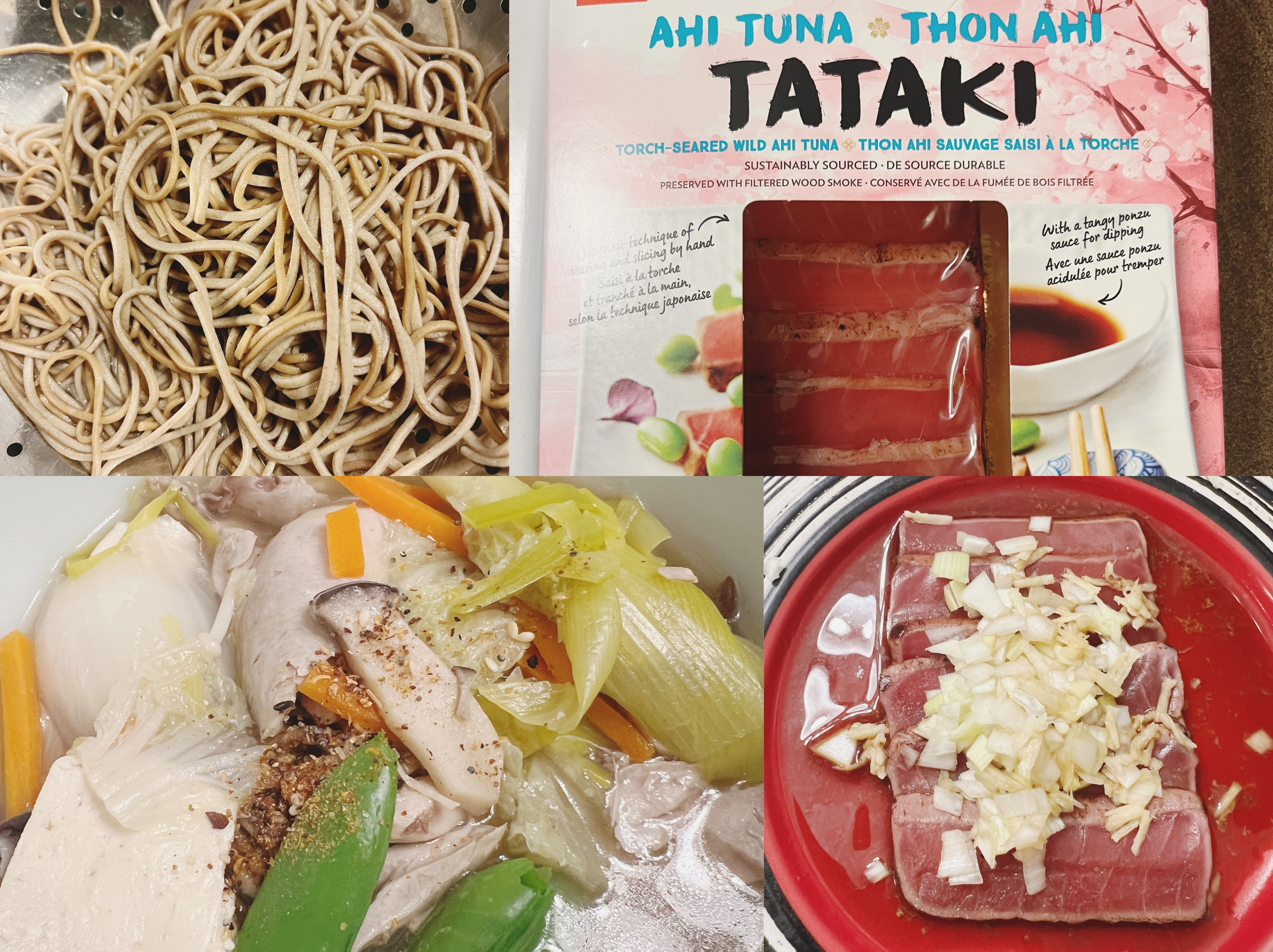
Japanese Traditional Soup Dish: Zouni without Mochi and Seared Bonito (Tataki)
Happy New Year! How were everyone's New Year's Eve and New Year's Day? The weather here has been mild, and although I didn’t have a specific day off, I’ve been enjoying a relatively quiet day. Despite my schedule, I wanted to prepare some Japanese food.
As I mentioned before, sourcing Japanese ingredients in my area can be quite challenging. There are some Asian food stores, but I can’t always find exactly what I need, so improvisation is often necessary.
This time, I decided to make a traditional Japanese soup dish called Zouni. The ingredients vary depending on the family and region. My grandmother’s Zouni included daikon radish, carrots, mitsuba herbs, mochi (rice cakes), and shiitake mushrooms, all in her handmade chicken soup. Her Zouni is very special to me! I always try to replicate her style, but something always feels a little different.
Unfortunately, I couldn’t find mochi this year. Usually, my mother sends mochi from Japan for the New Year, but because of a Canada Post strike, it was impossible for her to send it this time. I used tofu as a substitute.
Interestingly, I found a seared bonito (Katsuo no Tataki) at the local supermarket. It wasn’t cheap, but I wanted something special, so I bought it. I was curious about the taste.
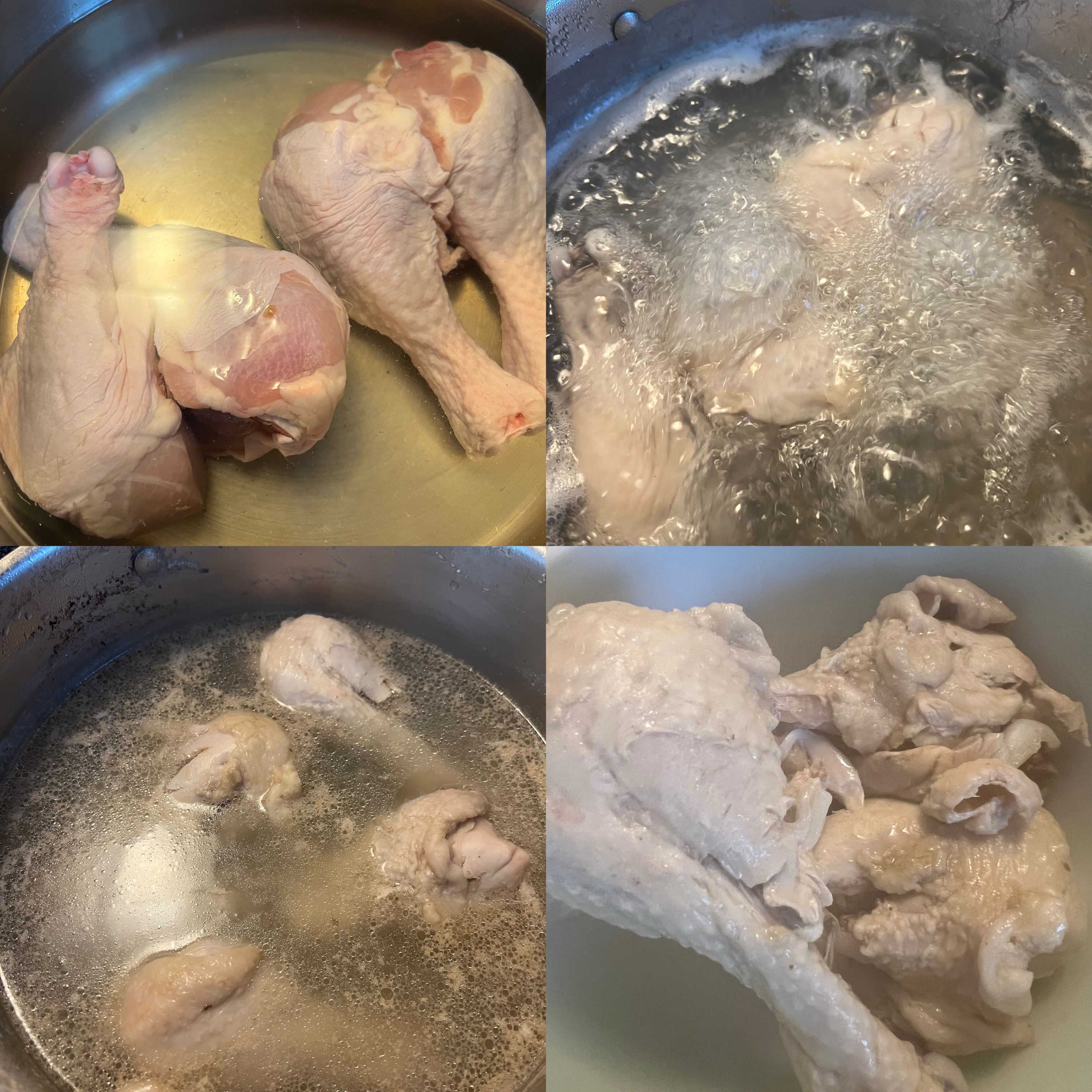
Making the chicken soup stock takes a bit of time. In Japan, it’s easy to find chicken bones at supermarkets, but here in Canada, it’s much harder. I once asked a staff member at a store, and while they tried to help, the owner ultimately declined my request.
I usually use drumsticks instead. This time, the supermarket didn’t have any chicken, which was very strange. I hope it’s not due to a disease. I went to a local farm market and found some good-quality drumsticks.
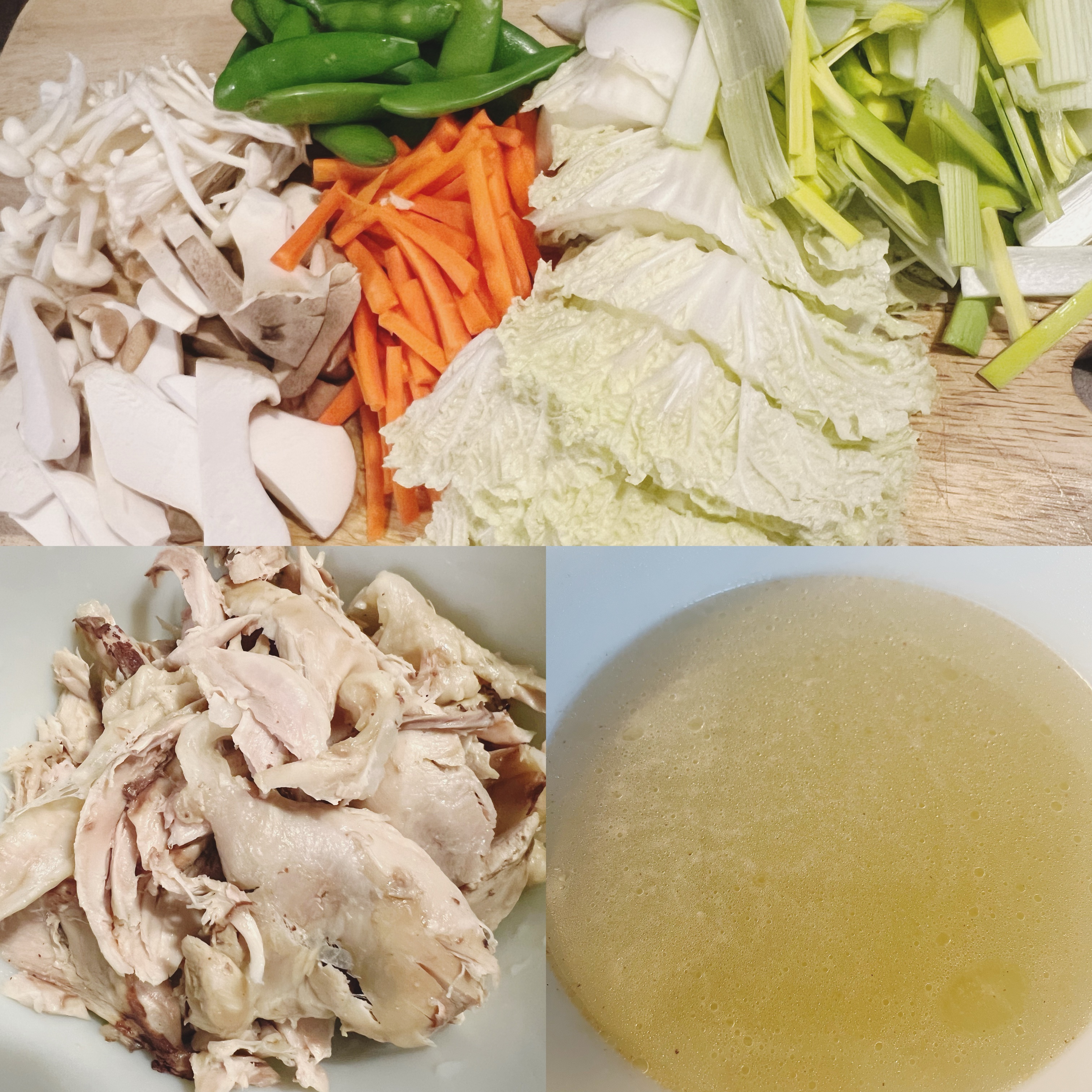
To make the stock, I boiled the drumsticks for 1–2 hours until the meat became very tender. I used spring water and strained the stock with gauze for a smooth finish. My dog kept watching me intently, so I gave him a small piece of chicken!
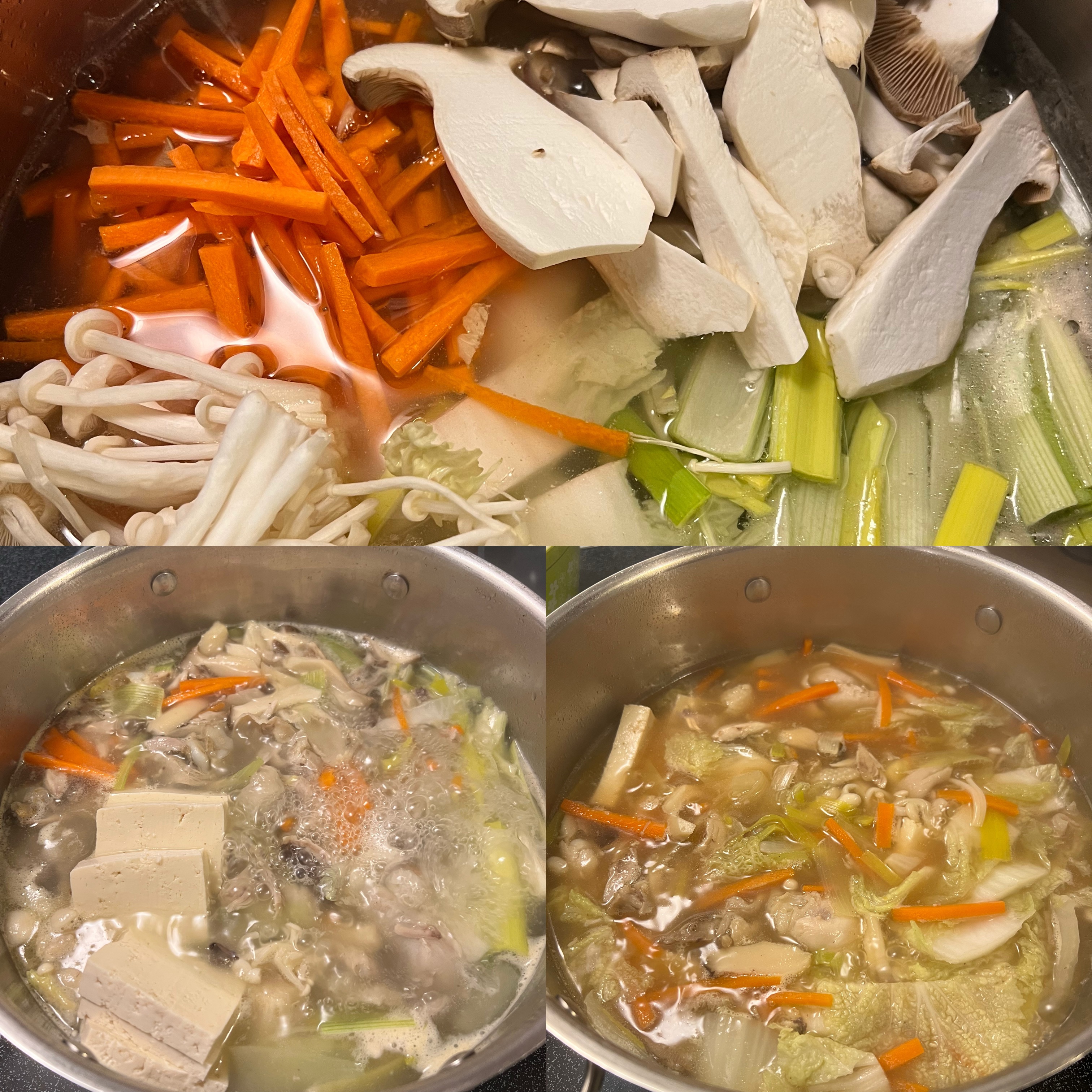
Once the stock was ready, I prepared the vegetables and tofu. I added the vegetables to the stock and let them simmer until tender.
Typically, Zouni is topped with boiled or baked mochi, but since I didn’t have any, I used tofu instead.
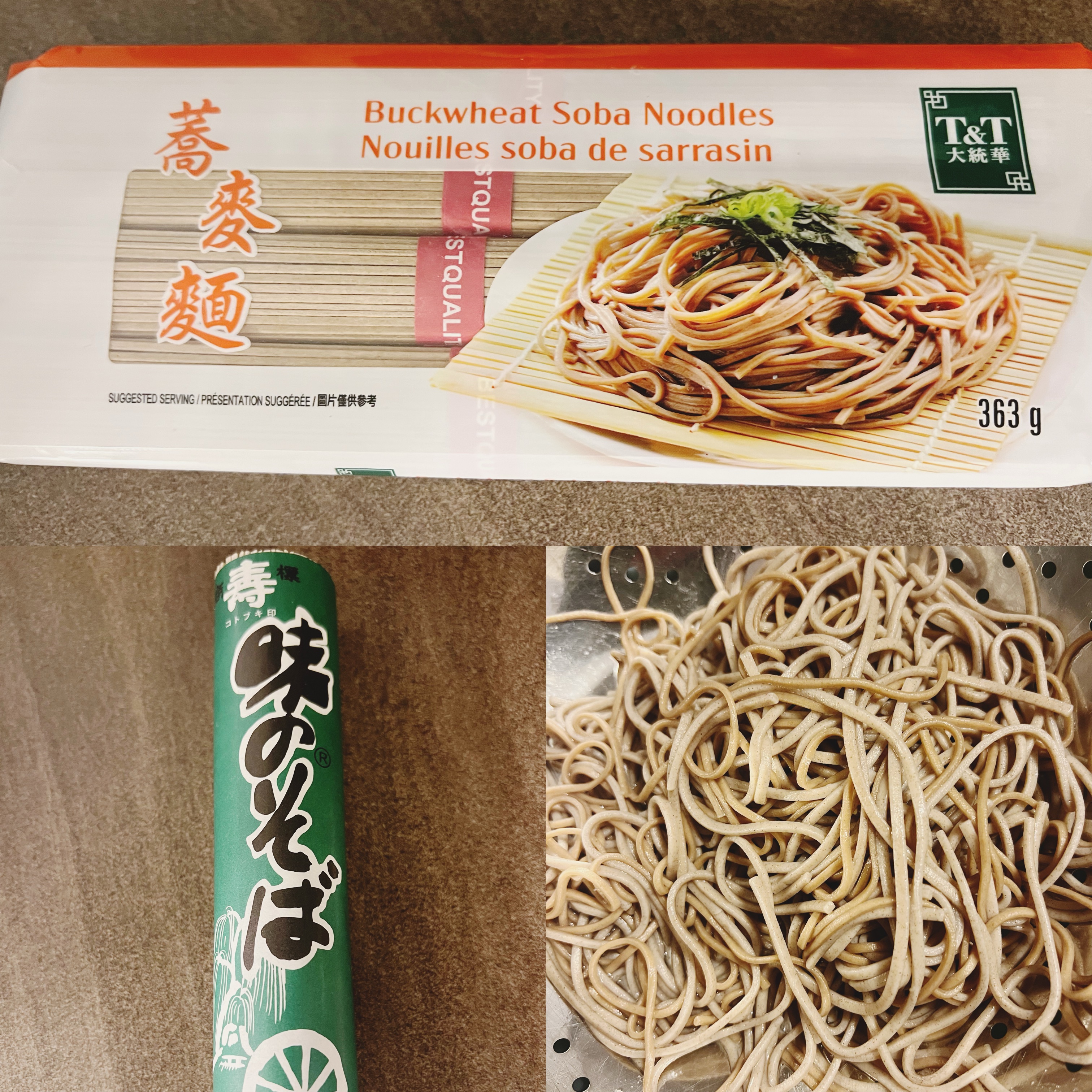
I also boiled some buckwheat soba noodles I had saved from my mother’s last care package, and mixed with a newer batch I found locally. The noodles had different boiling times but turned out well.
On the second day, I usually turn the leftover soup into a risotto by adding rice.
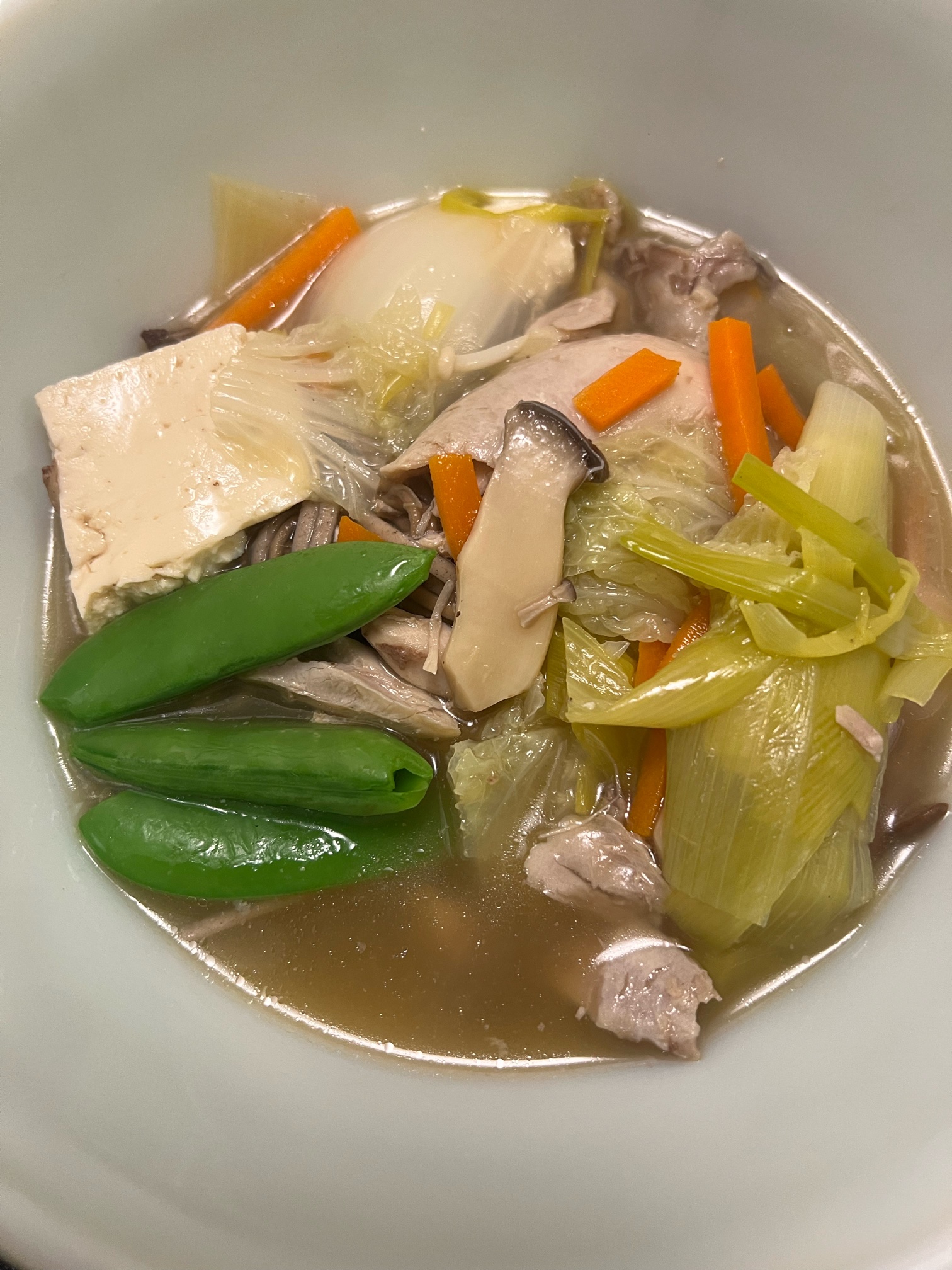
This year, I didn’t receive the special bowls I had ordered for New Year’s, so I served the Zouni in regular cooking bowls. Hahaha! While it wasn’t exactly like my grandmother’s Zouni, it turned out fine.
Zouni (Ozoni, 雑煮) is traditionally made by simmering mochi and offerings presented to the Toshigami deity on New Year’s Eve. Sharing it with the gods (shinjin kyoshoku) symbolizes gaining strength. Even today, phrases like “serve rice” reflect gathering the mountain of divine strength into a bowl.
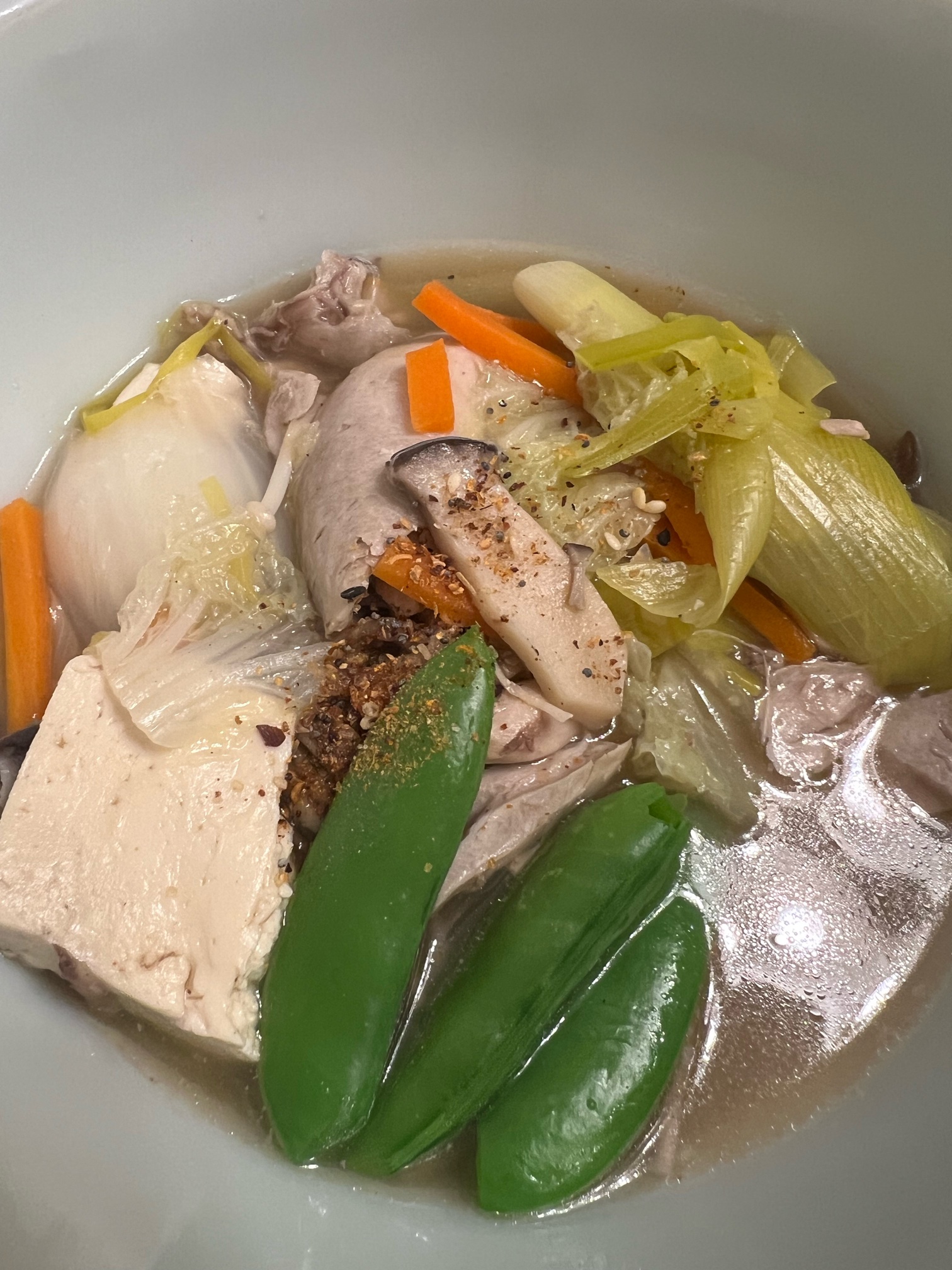
Appreciation is the key to enjoying Zouni! I added a sprinkle of shichimi pepper on top and savoured it with gratitude. Even without mochi, it was delicious.
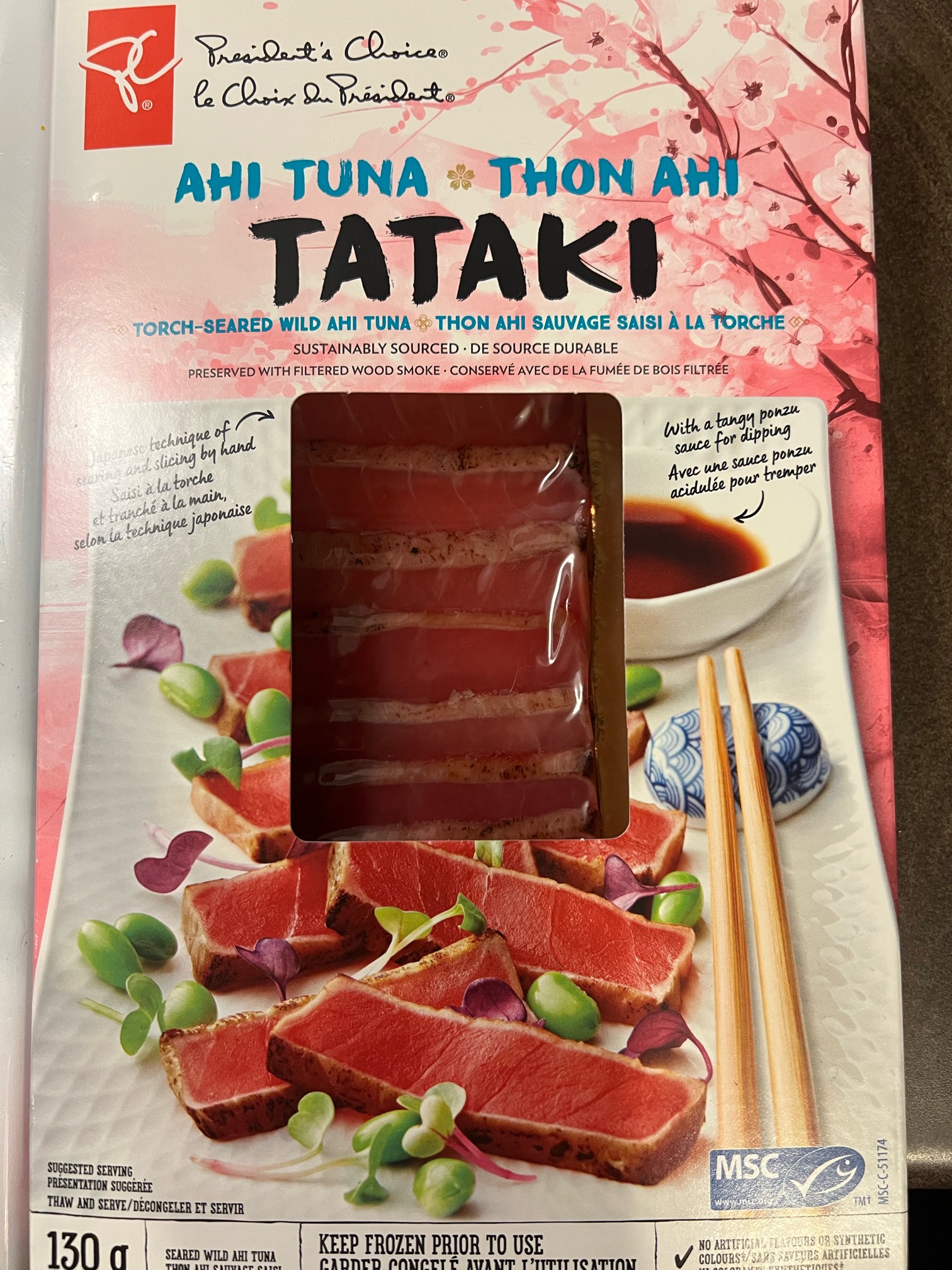
As for the Tataki, I paired it with freshly chopped leek, grated ginger, and ponzu sauce.

The taste was okay. It was not quite what I’d expect at a restaurant back home, but I appreciated being able to enjoy a taste of Japan in a place where Asian food is scarce.
Ingredients for Zouni:
Mochi (substituted with tofu this time)
1 carrot
6 eringi mushrooms
½ pack of enoki mushrooms
½ daikon radish or Chinese cabbage
8–10 snap peas (pre-boiled)
½ leek
Chicken Soup Stock:
4 drumsticks (serves 2–3 people)
Salt to taste
2–3 half ladles of soy sauce
1–2 half ladles of mirin
1 half ladled of sake
Additional chicken stock if needed
Fill the big pot with water until it’s 3/4 full
Cooking Time: Approximately 2 hours, including boiling and preparation.

Japanese 日本語

餅なし雑煮とカツオのたたき
あけましておめでとうございます!みなさんは大晦日とお正月、どのようにお過ごしですか?こちらの天気はかなりマイルドです。今年のお正月は特別にお休みではないのですが、静かに過ごせています。スケジュールを調整しながら、日本食を作りたいなと思いました。
以前書いたことがあるのですが、今住んでいるところで日本食の材料を完璧に見つけることは不可能です。アジア料理の材料を扱っているお店はいくつかあるのですが、欲しいものが確実に手に入るとは限らないのです。
今回は、お雑煮を作ろうと思いました。お雑煮は住む地域や家庭のスタイルによってさまざまな味があると思います。私の祖母のお雑煮は大根、にんじん、三つ葉、餅と椎茸と手作りの鶏がらスープを使います。祖母のお雑煮は特別な味です!いつも真似をして作ってみるのですが、なかなか同じようにはならないものです。
残念ながら、今年は餅が手に入りませんでした。たいてい、母が日本からお正月用に餅を送ってくれるのですが、今年はカナダ郵便局のストライキがあったために郵送できませんでした。餅がない代わりに豆腐を使いました。
おもしろいことに、近所のスーパーでカツオのたたきを見つけました。少し高かったのですが、なんとなく特別感を出したかったので購入してみることにしました。どんな味なのでしょうか。

さて、手作りの鶏がらスープを作るのは少し手間がかかります。日本では、スーパーでスープ用の鶏ガラを簡単に手に入れることができますが、カナダの今住んでいるところではなかなか見つかりません。以前、スーパーの従業員に鶏ガラを譲っていただけるかどうか尋ねてみたことがあります。店員さんはびっくりして、裏で社員に聞いてくれると言ってくれました。社員さんが出てきて、それは無理だと断られました。
たいていはドラムスティックを使って作ることにしています。今回は、近所のスーパーの鶏肉コーナーには全く肉がなく、がらんとしていました。いったいどうしたのしょうか…。鳥の病気によるものではないことを願います。代わりに近所の農場ファームに行っていいドラムスティックを購入しました。

鶏がらスープを作るのには、柔らかくするまでに1−2時間くらいトロトロと煮込むので少々手間がかかります。湧き水を使って煮込み、ガーゼとザルを使ってこし、綺麗で透明なスープを作りました。終始横でジロジロと作業を眺めていた私の犬は、頑張った甲斐があり、最終的に茹で上がった鶏肉を一口だけもらいました。

スープが完成したので、あとは野菜と豆腐を入れるだけです。投入したらゆっくり煮込むだけです。
通常はここに茹でたり焼いたりした餅を入れるのですが、今回は残念ながら餅がないので豆腐を代わりに入れました。

前回母が送ってくれた蕎麦をひと束だけとっておいたので、近所のスーパーで買った蕎麦と混ぜて茹でました。茹で時間が違うのですが、混ぜてもおいしかったです。
2日目は、残り物にご飯を入れて雑炊にして食べます。

お正月用に使うための大きな器を注文しておいたのですが、全然届く様子がありません。ですので、料理用のボールでお雑煮を食べました。ははは、残念。祖母のお雑煮とは微妙に違う味でしたが、おいしく食べることができました。
雑煮の語源を調べてみると、大晦日から「年神」に供えておいた餅や供え物を一緒に煮たものという意味だそうです。 神に供えたものを共に食べると(神人共食)、神から力を授かり元気がでると考えていたようです。 今も「ご飯を盛る」「ご飯をよそう」というように、「力を授けてくれる神のいる山を茶碗の中に盛るという意味合いがあるのだそうです。

お雑煮をいただくには感謝が大事ですね。食べる前に七味を少々かけてからいただきました。餅なしお雑煮でもおいしく感じました。

カツオのたたきには、ネギとおろし生姜を加えて食べました。付いていたポン酢ソースはなかなかいい味でした。

肝心のカツオのたたきの味はまあまあでした。これが日本のレストランで売られているとしたら…、おそらくちょっと残念に感じるのだと思いますが、こういう土地で日本食を楽しめるのだと考えれば、ありがたいのだと思います。
お雑煮の材料:
餅 (今回は豆腐を使用)
にんじん 1本
エリンギ 6
エノキ 半分
大根か白菜 半分
スナップエンドウ 8
ネギ 半分
鶏がらスープ:
ドラムスティック4本くらい (2−3人分)
塩 少々
しょうゆ おたま半分くらいを2−3
みりん おたま半分くらいを1−2
酒 おたま半分くらいを1
鶏ガラスープの素を足したい方はお好みで
水 鍋に3/4くらい
調理時間:スープを煮込む時間と準備時間も含め約2時間。

Thank you for reading!
お読みいただきありがとうございます。


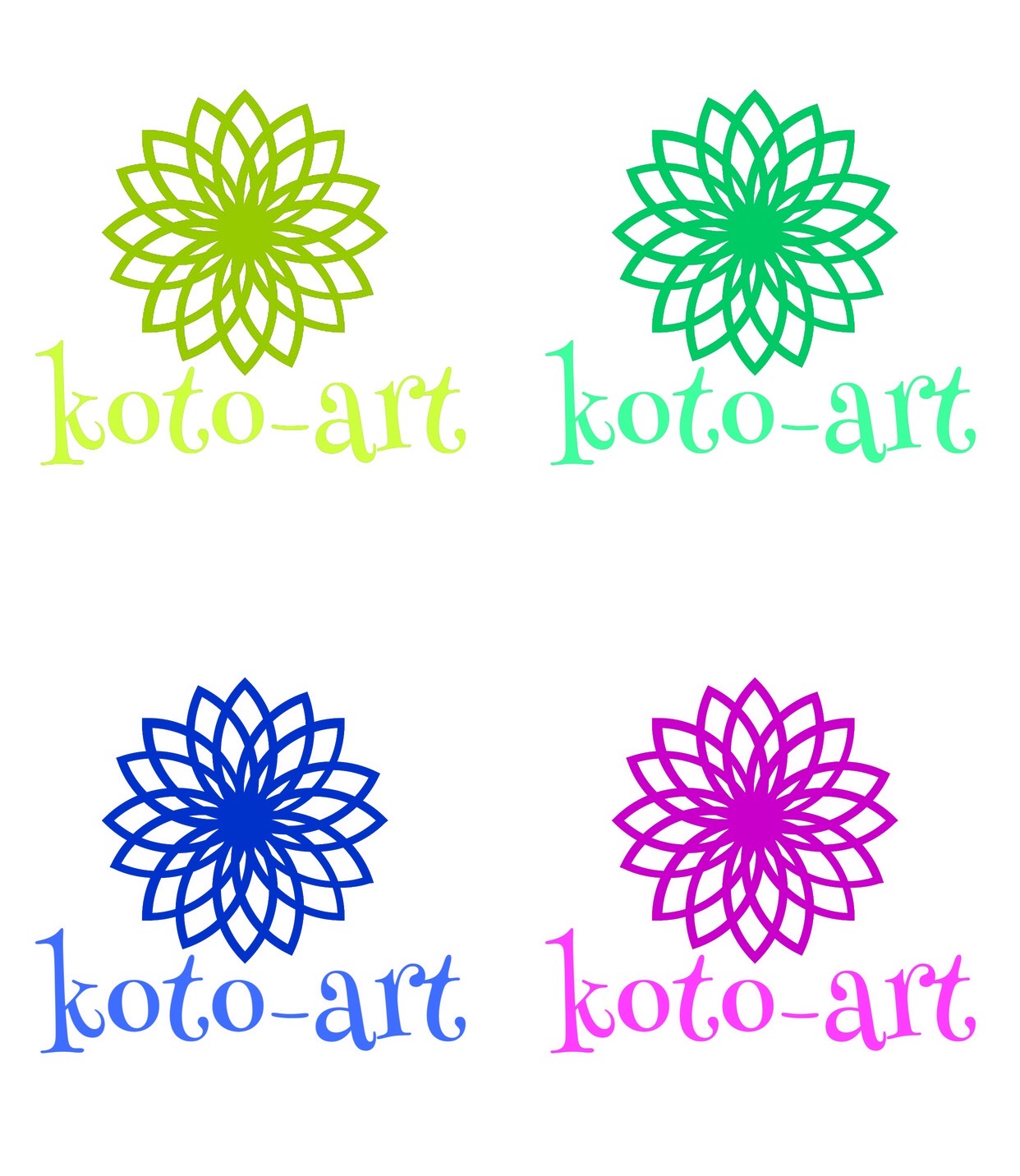

Comments